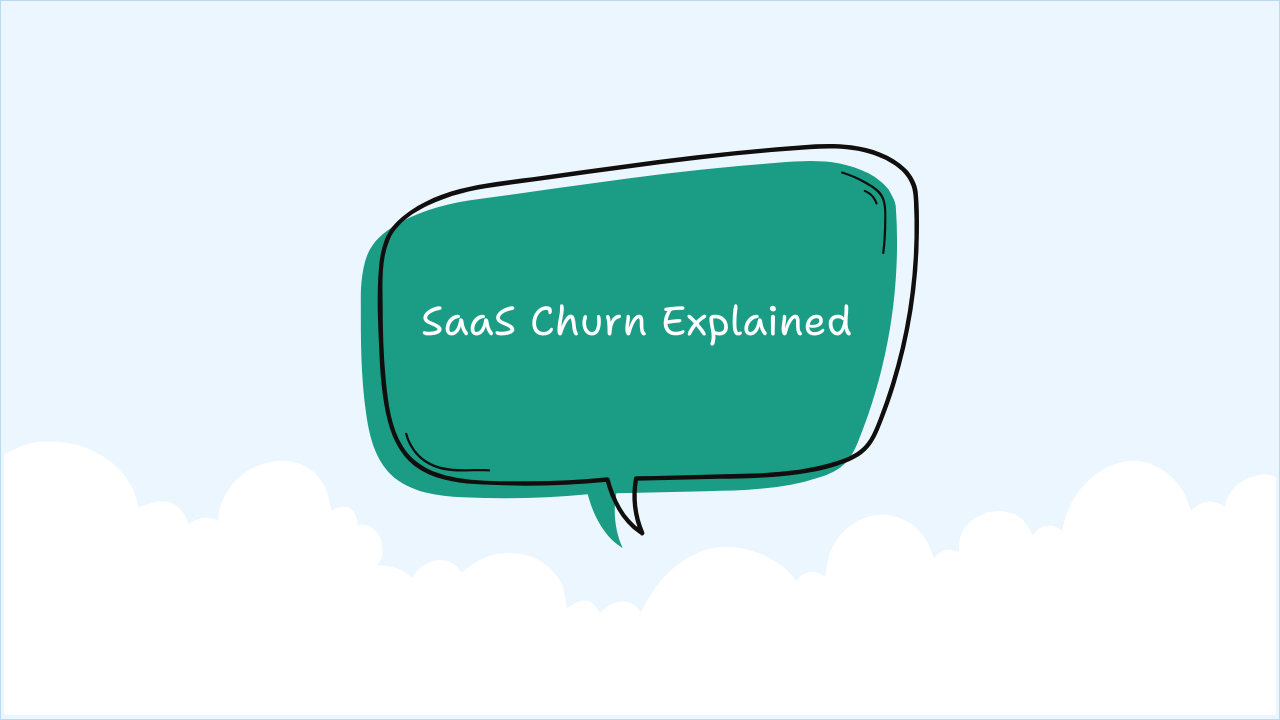Imagine pouring water into a bucket riddled with holes. You keep filling it, but it never overflows. That’s exactly what growing a SaaS company feels like when you have a churn problem. You might be driving traffic, signing up new users, and launching new features, but if users are silently slipping away out the bottom, you’re stuck.
Let’s break down what churn really is, why it matters more than most founders think, and how to start fixing it.
What Is SaaS Churn?
Churn is the rate at which customers stop using your SaaS product over a given period. If 100 customers start the month with you and 5 cancel by the end, you have a 5 percent monthly churn rate.
Churn isn’t just a retention problem. It’s a growth problem. For every new customer you acquire, churn is trying to undo your hard work. That’s why many growth experts consider reducing churn one of the most effective and underrated ways to grow.
Churn vs. Retention: What’s the Difference?
- Churn is the percentage of customers who leave.
- Retention is the percentage of customers who stay.
They’re two sides of the same coin. A 5 percent churn rate means a 95 percent retention rate. In SaaS, small percentages make a big difference, especially when compounded over months.
The Leaky Bucket Metaphor
Let’s go back to the leaky bucket.
You spend time, money, and effort pouring new users into your SaaS. But unless your product keeps them engaged, some of them will slip out the bottom. The faster you pour (marketing), the faster you leak (churn), the more water (users) you lose.
Fixing churn is like plugging those holes. It makes sure your growth efforts actually result in a fuller bucket.
Churn Is Growth in Reverse
Here’s the hard truth: if your churn rate is too high, your business can’t grow, no matter how good your marketing is.
Churn erases your growth. Every dollar in CAC (customer acquisition cost) becomes less valuable when customers leave early. High churn also kills your LTV (lifetime value), which throws off your entire business model.
Industry Benchmarks: What’s a Good Churn Rate?
Churn varies based on your business model, pricing, and audience. But here are some rough benchmarks:
Average Monthly Churn by SaaS Type:
- B2B SaaS (Annual Plans): 1–2 percent
- B2B SaaS (Monthly Plans): 2–4 percent
- B2C SaaS (Monthly Plans): 5–7 percent
- Freemium SaaS: 8–10 percent or more
Pro tip: The earlier your product stage, the more churn you should expect. But that doesn’t mean you should ignore it.
How to Calculate Churn Rate
The basic formula:
Customer Churn Rate = (Customers Lost During Period ÷ Customers at Start of Period) × 100
Example:
You started January with 500 customers. By January 31, you have 475.
- Customers lost = 25
- Churn rate = (25 ÷ 500) × 100 = 5 percent churn
Other churn types to track:
- Revenue churn: Tracks lost MRR, not just user count.
- Net revenue retention (NRR): Accounts for upsells and expansions.
- Logo churn: Just counts the number of accounts lost.
8 Ways to Reduce SaaS Churn
- Improve Onboarding
Help users see value fast. That’s where stickiness begins. - Trigger Lifecycle Emails
Personalized emails based on usage patterns can re-engage users. - Identify At-Risk Users
Look for signs like reduced logins, support issues, or payment problems. - Collect Feedback Before They Cancel
Use exit surveys or chat to capture why users leave. - Make Cancellation Flexible
Give users the option to pause instead of canceling outright. - Deliver Value in the First Session
If users don’t win quickly, they often don’t return. - Surprise and Delight
Give users something unexpected: a feature, resource, or tip. - Offer Downgrades
Don’t lose a customer if they’re willing to pay less.
5 Tools to Help You Reduce Churn
- ChurnZero – Customer health tracking and automation
- ProfitWell Retain – Recover failed payments with machine learning
- Intercom – Triggered onboarding messages and support
- Userpilot – No-code in-app experiences and tooltips
- Baremetrics – Churn analytics, forecasting, and benchmarks
Key Takeaways
- Churn is the enemy of sustainable growth.
- You can’t out-market high churn.
- Retention increases lifetime value and reduces CAC.
- Focus on user success, communication, and early wins.
- Plugging the leaky bucket is how SaaS companies scale.
FAQs
1. What is a good churn rate for SaaS?
Under 2 percent monthly churn is great for B2B SaaS. For B2C or freemium models, 5–7 percent is more typical.
2. How do I know if my churn rate is too high?
If your MRR isn’t growing and you’re replacing users instead of compounding them, your churn rate is a problem.
3. What is revenue churn vs. customer churn?
Customer churn measures accounts lost. Revenue churn shows the actual money lost, which often tells a clearer story.
4. Can churn ever be zero?
Very rarely. But your goal should be to reduce it as much as possible and understand the reasons behind it.
5. Should I focus on retention more than acquisition?
Yes. Retention compounds. Fixing churn makes every acquisition more valuable.
Final Thought
Growth doesn’t always come from more traffic or bigger ad spend. Sometimes, it comes from keeping the users you already have.
If you’re pouring water into a leaky bucket, stop pouring. Start patching.

